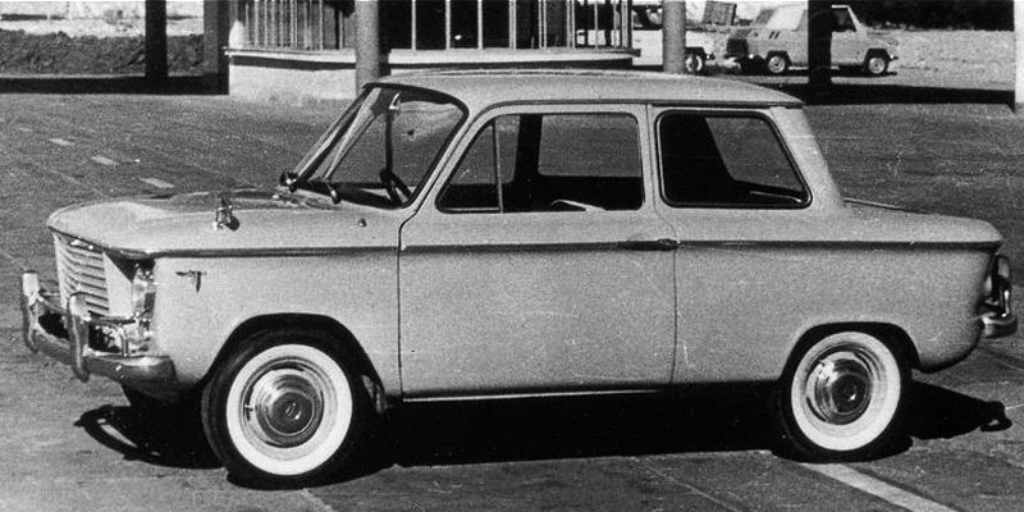A decade into Egypt’s Industrial Revolution, in 1962, President Gamal Abdel Nasser gave a speech to celebrate the country’s strides in industrializing its economy.
In the company of foreign delegates, Nasser iconically championed the fact that Egypt now manufactures everything – “from needles to rockets,” he claimed, later repurposing that quote into an iconic slogan.
A few minutes later in the speech, Nasser proudly highlighted that Egypt produces its own cars as well: Ramses, Egypt’s first locally manufactured car.
As short-lived as it was, from 1960 to 1972, it became a cultural staple of the era, and a driving force behind belief in Egypt’s post-colonial industrial powers.
The idea behind Ramses began to materialize in 1958, according to Adel Gazarin, former president of Al-Nasr Automotive Manufacturing Company, a state-owned enterprise that produced Egypt’s local vehicles.
“It is said that any newly independent country longs for three things: to set up embassies, to have a flag, to establish a car industry,” explains Gazarin in an interview for ‘Ramses the Car’ (2008), a short documentary.
Basing its design and engine off of the NSU Prinz, a compact automobile manufactured in West Germany, Egypt’s Ministry of Industry rapidly established a production factory and began to accept pre-orders for Ramses as a means of funding.
In the first decade of Nasser’s rule, Egyptians’ educational and occupational lives were upgraded thanks to the industrial revolution. Ramses was an outcome of the nation’s aspirations to become an economic powerhouse.
According to Gazarin’s definition, the car would act as a driving force for Egypt’s growing sense of nationalism.
Ramses was the product of Nasser’s industrial revolution and was initially a source of pride for Egyptians: a locally-made car, for Egyptians by Egyptians.

Demands for the car were high at first, a waiting list was placed to manage the number of requests.
In practicality, however, Ramses failed to meet expectations – both in terms of quality and production speed.
The factory responsible for manufacturing the car produced five-to-six cars per day, sold for EGP 200 each, a costly price for most at the time. In comparison, the average car manufacturer abroad would produce around 3,000 cars a day; Egypt found itself unable to financially match the production.
To make matters worse, Ramses’s external body was manually designed due to a lack of mechanical automated presses, leaving a rough and unappealing look. The car soon transformed from a symbol of nationalism and industrial progress to a source of mockery for Egyptians.
An import ban on exotic cars further exacerbated the situation, as Egypt’s nationalized car industry could not catch up with both demands and cars requiring repair.
Nasser himself rode a Cadillac, the presidential vehicle of the time, despite the import ban.
By 1972, Al-Nasr Automotives lost faith in producing Egyptian cars, instead partnering with Italian vehicle company Fiat, to locally manufacture and sell their cars in Egypt. By 1974, Nasser’s ban on exotic car imports was lifted by succeeding president, Anwar Al-Sadat.
Soon enough, the Fiat became the preferred choice for car-commuting Egyptians, and the Ramses was left behind as a remnant of Egypt’s industrial hopes – a junker parked away to collect dust.
Despite the car’s shortcomings, its story is far greater than the sum of its parts, however broken down. Ramses symbolized Egypt’s beliefs of the time; a belief that the country could match the economic influence of other states abroad.
Ramses aside, Egypt’s industrial revolution of that era experienced strides in development in other fields, be it through infrastructure, factories, power plants, food, and trade.
Today, we see lessons learned from the modern-day government. The country plans to boost local automobile manufacturing in a bid to strengthen the economy, but this time for foreign car companies, capable of funding production.
Subscribe to the Egyptian Streets’ weekly newsletter! Catch up on the latest news, arts & culture headlines, exclusive features and more stories that matter, delivered straight to your inbox by clicking here.







Comments (3)
[…] I-Ramses: Imoto Efanekisela Inguquko Yezimboni YaseGibhithe Lolu hlelo lokusebenza lwase-Egypt Lethula Ubunikazi Bokubambisana Ekubhekaneni Nezintengo Zasekhaya Zokuvakasha Ezikhuphukayo […]
[…] رمسيس: السيارة التي كانت ترمز إلى الثورة الصناعية في مص… يقدم هذا التطبيق المصري الملكية المشتركة لمواجهة ارتفاع أسعار منازل الإجازات […]